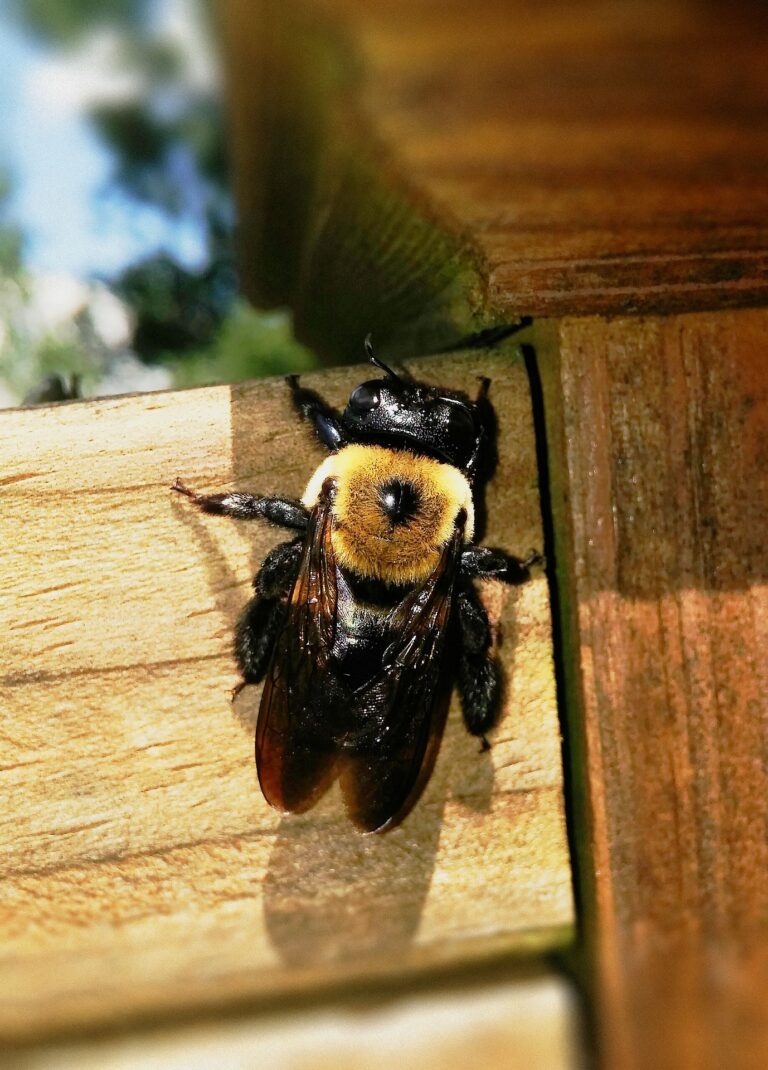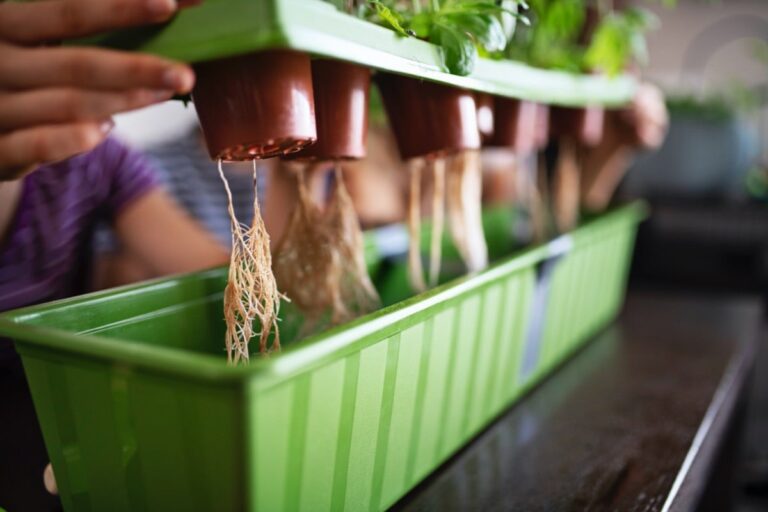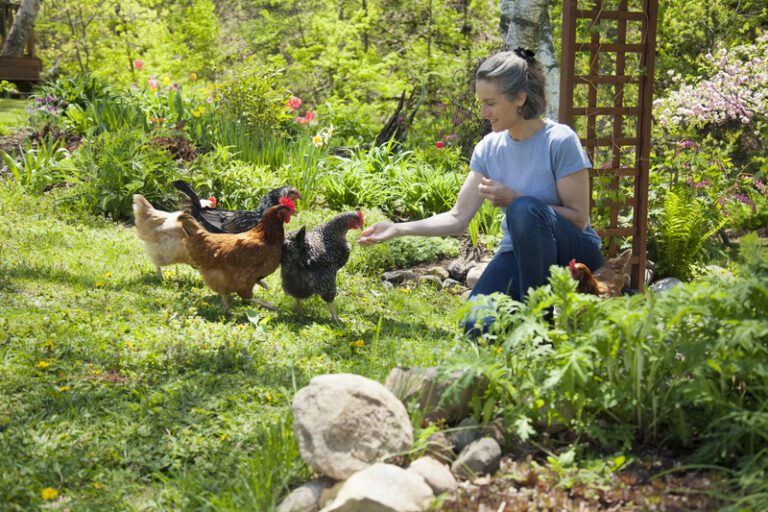How to Raise Backyard Chickens – The Complete Guide
Families across the world are joining the backyard flock uprising. With some chicks, a coop, and a long-standing plan of action, a backyard flock produces fresh, wholesome eggs for families and provides them the enjoyment of watching a cute little baby chick grow into an adult hen. The initial step in establishing a backyard flock is crafting a plan.
Some Things to Consider Before Getting Chickens:
First, check local town decrees to ensure that keeping chickens are allowed in your area or if there is a limit to the number of hens you can keep at one time. You don’t want to invest time, money, and energy into preparing for chickens only to find out that you can’t even keep them in your backyard!
Make sure you have the space for a full-size chicken coop or a henhouse. It has to hold a nest box, a feeder, a roosting area, water containers, and for every three hens. A proper hen coop should be large enough to stand straight to shovel manure and gather eggs comfortably, but a simple henhouse can be small. Also, any housing must be strong enough to protect your chickens from predators.
In this article, we’ve explained how you can build a chicken coop in your backyard.
The short version is:
Chickens need water and food daily. Feed prices vary depending on your area and the quality of the feed, but they are generally not very expensive. How long a bag of feed lasts depends on the number of hens you have in your backyard.
Hens will lay eggs through summer and spring and well into fall as long as they get enough sunlight, which is generally 12 to 14 hours. You can collect eggs daily or sometimes even twice daily, although you will have to clean up after your chickens throughout the year.
If you go on vacation, you must arrange for a reliable chicken sitter.
Steps on How to Start Raising Chickens:
We can gain a lot from a backyard flock. Chickens can produce truly fresh eggs and flavorful, healthy meat. And we can enjoy watching our birds from the back porch and teaching our children duties and how animals grow.
Before buying new chicks this spring, here are six tips on raising chickens.
- Select the breed that’s right for you.
Poultry breeds come in various colors, shapes, and sizes. Families who want to produce meat or eggs should start with the most common breeds of chickens.
Difference between various chicken breeds:
From egg production to regal plumage, nine breeds are considered among the most prized varieties of backyard chickens.
- Australorp
- Araucana
- White Leghorn
- Buff Orpington
- Plymouth Rock
- Sussex
- Marans
- Silkie
- Rhode Island Red
Decide and plan what you want to gain from your flock of backyard hens. If you want fresh eggs, you should consider: White Leghorn hybrids, which produce white eggs; Plymouth Barred Rocks, which produce brown eggs; Rhode Island Reds, which also give brown eggs; Blue Andalusians which give white eggs or Ameraucanas/Easter Eggers, which produce blue eggs.
Cornish Cross chickens grow rapidly and are best suited for producing meat. If you’re hoping to produce meat and eggs, you should consider dual-purposed breeds like Buff Orpingtons, Plymouth Barred Rock, or Sussex. Exotic breeds are best to keep as pets or for show.
- Decide the number of birds you’d like to have in your backyard:
Your flock goals and local ordinances may determine the gender and number of birds in your backyard flock. Keep in mind that young chicks grow into adult birds. You must make a budget for the following:
- The housing your birds will need.
- The time you will spend with your flock.
- How you’ll collect and manage the eggs.
- And what you plan to do with the birds after they stop laying eggs.
After this, you can start small with 4 to 6 chicks.
Will you need a rooster?
No! It’s a common misunderstanding that you need a rooster for a chicken to lay eggs. The fact is that a male is required only if you want to breed your chickens; i.e., you want the eggs fertilized to hatch as baby chicks. While waking up in the morning to a country call of a rooster may sound delightful, having a rooster in your backyard flock is not recommended because it can become violent to people and hens. You should also be aware that determining the gender of a baby chick is complex, and accidents happen.
- Research a trustworthy chick supplier.
You can consider purchasing chicks from a credible hatchery. To prevent possible disease problems, you must ensure the hatchery has vaccinated chicks for coccidiosis and Marek’s Disease.
Buying chicks on the web is a safe way to bring chickens home. But we also advise you to only purchase from a hatchery that has been certified by the National Poultry Improvement Plan. Local farm-supply stores also seasonally have chicks available, although they usually have fewer breed varieties.
Hens don’t start laying eggs until they are between 20 and 24 weeks old. If you don’t wish to wait that long, you can consider a “started pullet,” a chicken that’s 15 to 22 weeks old. Once familiar with her new surroundings, the hen will immediately begin laying eggs.
- Prepare your brooder.
It would be best to keep baby chicks in a draft-free, warm shelter, a brooder. The brooder should have a heating lamp and be completely bounded with a bottom surface that you can wrap with bedding. Avoid having square corners in the brooding area to stop chicks from being stuck in the corner if the birds huddle in one area.
Every chick needs at least 2 to 3 feet of floor space for six weeks. Fix the brooder temperature to 90 degrees Fahrenheit for week 1 and then slowly reduce heat by 5 degrees Fahrenheit every week until reaching at least 55 degrees Fahrenheit. You must arrange a clean and spacious coop ready for the chicks once they added heat source is no longer needed. Through all the stages, always provide your chicks with abundant clean fresh water that is changed regularly.
Whether you flock toward a French château or a rustic red barn, there are the six important elements needed for a happy and safe henhouse.
Nesting Box:
Hens crave darkness and privacy when laying eggs, so you plan for at least one nesting container for every four to five hens. A box that measures 14 inches wide, 14 inches in height and 12 inches in diameter will provide even a large hen with plenty of room. Add a door along the external wall of each box for easier egg gathering.
Box Bedding:
A soft, inexpensive material such as pin shavings or hay offers easier cleaning and a comfortable spot. To keep things fresh, you can even mix in a bedding blend.
Roosting Bar:
Chickens choose to sleep high off the ground. You must provide them with a perch with a wooden roosting bar. Wood is usually preferable to metal or plastic as they are too slippery for the chickens to grasp properly.
Dropping Board:
This term refers to a box, board, or pan placed below the roosting bar to gather and hold manure, making routine cleanups easier.
Hanging Waterer and Feeder:
Keep the water and feed bowls or containers off the ground to maintain freshness, and place them inside the coop to keep out unwanted animals.
Enclosed Run:
Give your hens a spot to stretch their legs while also staying sheltered and safe from predators. Use metal screening or hardware cloth with at least a 1.2 mm gauge to ensure durability and strength.
- Focus on cleanliness.
Before new chicks arrive in your backyard – and throughout the development process – keep their surroundings clean. Young chicks are vulnerable to early health risks, so sterilize all materials before use and then weekly.
The correct household antiseptics can work well. Carefully read the directions to ensure your sterilizer is safe and should not leave a residual coating on any material. A mixture of 90 percent water and 10 percent bleach can work fine if the cleaner is thoroughly rinsed after cleaning.
- Create a long-term nutrition plan.
Strong chicks result in healthy chickens. For long-term success, you can follow programs available online from an authentic website or consult your local farms.
What do chickens consume?
While your eggs may soon be homegrown, your hens’ diet shouldn’t be. A poultry science nutritionist has devised an industrially prepared layer of puree or mush. It will have enough protein, calcium, and calories to keep a chicken healthy and guarantee an excellent thick eggshell.
While we encourage occasional treats, such as watermelon or mealworms, the majority of a hen’s diet must come from commercial goods. The abundance of fresh water is vital because chicken eggs are primarily composed of water, which is directly tied to the production of eggs. Mix in a splash of apple cider vinegar every couple of days a week to prevent bacteria.
How Much Does It Cost To Grow Chickens?
Chicken requirements are simple and somewhat low-cost, especially when considering the return you’ll get on those eggs. But they do entail a small initial investment. Female chicks generally cost between $4 and $7 each. You can also get your chicks for even less if you order a “mixed” flock instead of a particular breed. A 50-pound bag of good quality chicken feed costs roughly $25, which a flock of six birds will go through in almost a month.
Your most significant expense will be the chicken coop, which can cost from as little as around $100 for a simple kit to $10,000 if you’re going for a designer look. And just like with other beloved pets, don’t forget the regular trip to the vet.
Gardening with Chickens:
Most people who keep chickens do so mainly for the constant supply of garden-fresh eggs, but keeping chickens can also be advantageous for your garden.
When the gardening season for the year has finished, let your backyard chickens into your gardening space, and they’ll go crazy! They’ll pull up the stalks and stems of weeds and eat up any overripe or damaged vegetables that remain behind after you’re done gardening. They’ll eat any insects or weed seeds they find in the soil and will peck and digest vegetable leftovers, especially kale, carrot tops, broccoli stems, and chard. After that, your chickens will scratch the ground and peck out hidden insects or worms, and while doing so, they’ll mix up the soil—all with endless curiosity and enthusiasm.
Chickens not only provide an endless supply of fresh eggs—but they also produce a limitless amount of manure. Chicken manure can be aged, composted, and added to your garden. In about half a year, you can collect about one cubic foot of compost per chicken.
Collect and stack used bedding materials and chicken poop during your daily clean-up of the chicken coop. The best decomposition happens when the pile is 1 part bedding materials to 2 parts chicken poop. Lawn clippings, vegetable and fruit kitchen scraps, shredded paper, leaves, and twigs, can also be added to the mixture. Soak the pile, stir, and wet it regularly to add air for the following year. We suggest a temperature of 130°F to 150°F to eliminate any bacteria.
How Much Space Do Chickens Require?
It depends on which breed of chicken you’re growing. One medium-sized chicken requires at least 8-10 square feet outdoors and around 3 square feet of floor space inside the chicken coop. The more space, the healthier and happier the chickens will be; overcrowding results in feather picking and disease.
The birds also need a place to stretch their legs and spread their wings. A sizeable chicken run or a whole backyard will do. Either way, you must enclose the space appropriately to keep the chickens inside and predators out. Your cats and dogs are also counted as predators. Add chicken-wire railing to your list of tools.






